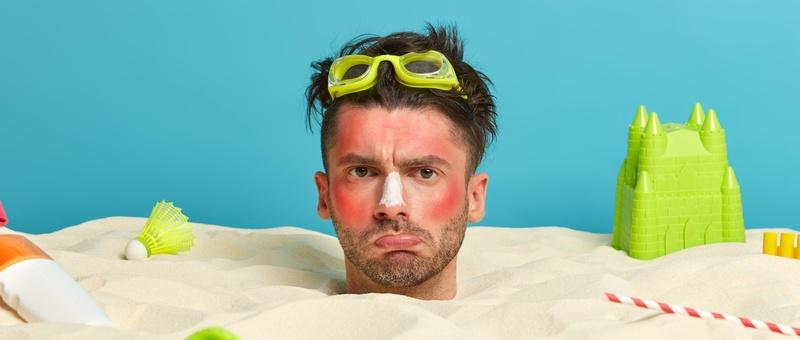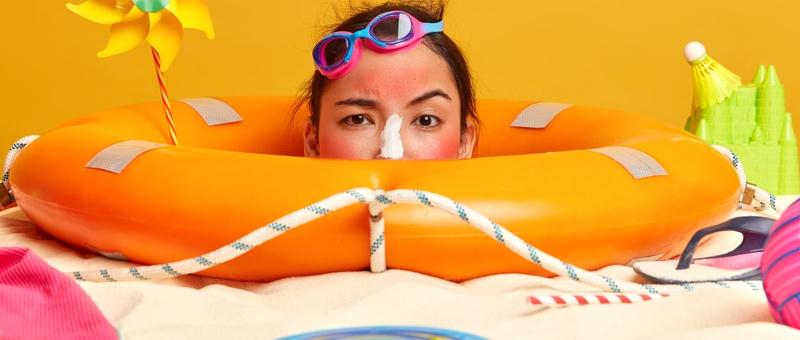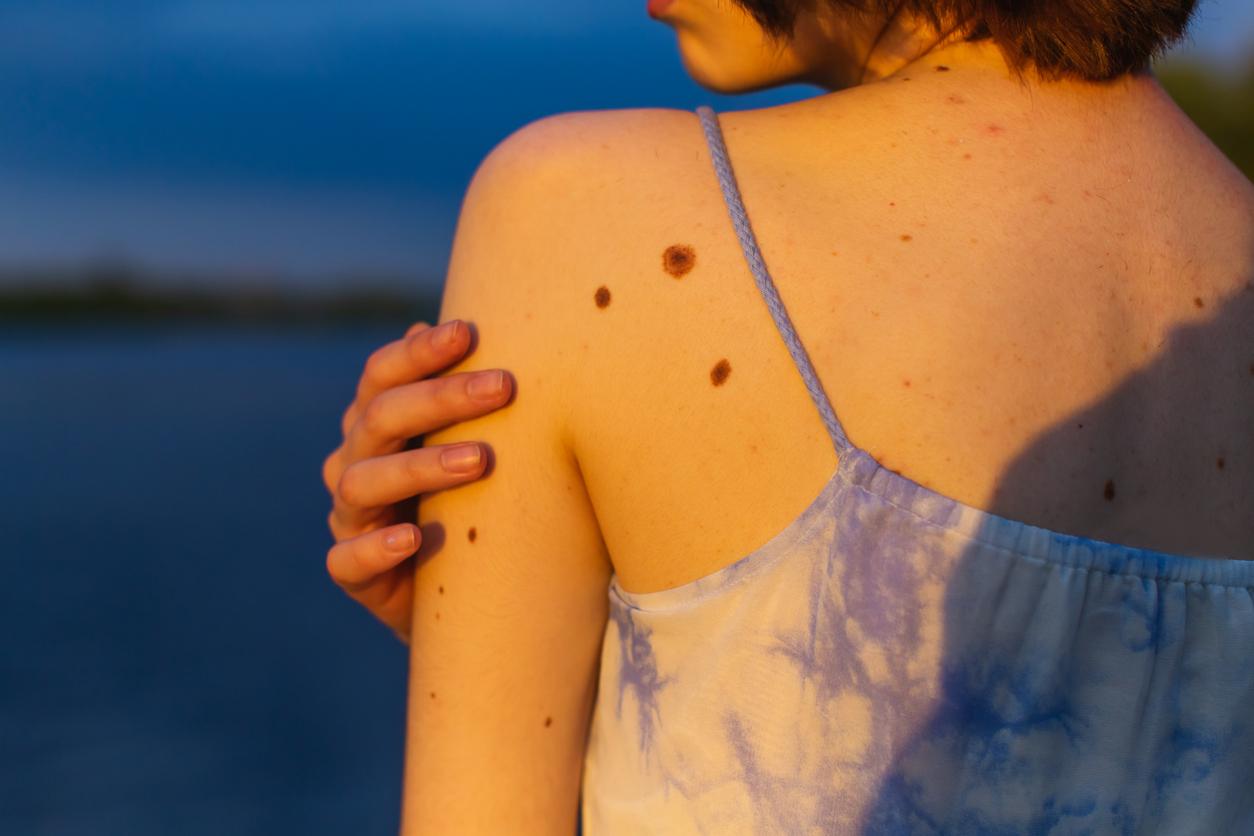
How to treat sunburn at home
Peer reviewed by Dr Colin Tidy, MRCGPLast updated by Lawrence HigginsLast updated 22 Jul 2025
Meets Patient’s editorial guidelines
- DownloadDownload
- Share
- Language
- Discussion
Most of us are careful to follow sun-safe guidelines. But if you forget to put on or reapply sun cream or stay a little too long in direct sunlight - knowing how to treat sunburn at home is important.
In this article:
With the warmer weather it's important to remember the steps needed to stay safe and well in hotter weather. If you or your child develop sore, red skin after sun exposure, there are several steps you can take to treat sunburn at home, minimise the damage, and speed up the healing process.
Continue reading below
How to treat sunburn at home
Seek out shade
Often you're not aware that the sun is burning your skin until sunburn symptoms start to appear. But if you do notice your skin getting hot or sore, make sure you find shade as soon as possible. "If you find yourself burning, it is paramount to get out of the sun to avoid further damage," advises Dr Najia Shaikh, GP medical director at One Skin Clinic.
Cool the sunburnt area
The next step is to cool down the area. Depending on your circumstances and the size of the sunburnt skin, you can put a damp towel on the affected area or take a cool bath or shower. Although this may feel a little uncomfortable, cooling the area will help to minimise damage.
Stay hydrated
It's also important to keep yourself hydrated. "I look at this as approaching and treating the burn from the inside out, as well as topically. Heat stroke, fatigue and dehydration are often seen in conjunction with burning, so it is important to remain hydrated. This is applicable of course all summer, even if you don't burn," says Shaikh.
Take painkillers to alleviate sunburn pain
If you are in pain and are able to take painkillers, over-the-counter pain relief or anti-inflammatory medicines such as paracetamol and ibuprofen will help to ease soreness.
Soothe the sunburn
There are products designed for putting on after being in the sun. However, these are not specifically designed for sunburn treatment. They may, however, help to moisturise affected areas. "You can put on an after-sun lotion, cream, or spray. They often help cool the skin and replace any lost moisture the burning process has inflicted. Use more natural products to help sunburns heal and to avoid further irritation," explains Shaikh.
How long does sunburn last?
Mild to moderate sunburn can last for as much as a week, so it's important to continue caring for the area until the skin has completely healed. You may continue to experience soreness, redness or other symptoms such as skin peeling. So how should you best care for sun-damaged skin?
Continue reading below
How to stop sunburn peeling
"Continue to put on after sun and moisturising products, which will really work at rehydrating the skin, locking in moisture. Following this step will help prevent peeling and relieve the burning, prickling and itching symptoms. When washing, use cool water, as hot water will be uncomfortable and add heat back to the skin."
"Again, treat the burn from the inside out by replenishing fluids and taking anti-inflammatory relief. Continue following the initial steps until the symptoms and burns ease. Try not to scratch or pick at peeling skin. And as tempting as its cooling properties may be, do not use ice," advises Shaikh.
It's also best to keep out of the sun as much as possible while your skin heals. "Do not venture back into the sun until fully healed," says Shaikh. "If you have to go outside, fully cover the affected areas with loose-fitting, breathable clothing, and seek shade as much as possible."
How to prevent sunburn
As well as protecting any damaged skin, it's important to follow advice carefully to avoid sunburn in the future. Avoid the sun between 11 am and 3 pm, which is when it is at its hottest with lots of harmful ultraviolet UV rays," explains Shaikh.
"When outside, seek shade, cover up, stay out of the sun, stay hydrated and, always wear sun cream. Sadly, the damage incurred from sunburn is permanent and long-lasting so should be avoided at all costs. Your burns will heal but my biggest offering of advice is that prevention is better than cure.
"Wear sun cream, especially on the face, 365 days of the year. Even in bleak and rainy weather, UV rays are still able to penetrate the skin. During the summer, wear a minimum of SPF30 sunscreen on the body and face. Pay attention to reapplication - for example if you go into a swimming pool, or after two hours in the sun."
How to treat severe sunburn
While minor to moderate sunburn can usually be treated effectively at home, more severe sunburn may require additional medical attention. So what signs should you be looking out for?
"Seek medical advice or call your doctor if your sunburns or symptoms are severe. For example, if your skin is blistering, swollen, or the burns are covering a large part of the body, this would be deemed as severe. Additionally, if you have a high temperature, feel tired, sick, or dizzy, these suggest medical attention is needed. These symptoms could be indicative of heat exhaustion or the chances of developing a heat stroke, which is often a result of a bad sunburn and needs attention."
Can sunburn cause heat exhaustion or heatstroke?
Severe sunburn can lead to heat exhaustion or heatstroke - where your body has to work hard to keep your at a constant temperature. It's important to know what the signs of these are what to do.
Symptoms of heat exhaustion
It’s important to know the signs and symptoms when you may be having too much heat.
The main symptoms of heat exhaustion are:
Headaches.
Cool, pale, and moist skin.
Fast, weak pulse.
Dizziness and light-headedness.
Weakness or muscle cramps.
Feeling sick and vomiting.
Passing out.
If you have these symptoms, move to a cooler place, stop exercising, and cool down immediately by dousing yourself with cold water and rehydrating. You may need to seek medical attention.
Symptoms of heat stroke
Heat stroke is a medical emergency. if you experience these symptoms call 999 in the UK or 9-1-1 in the US for an ambulance straight away. The symptoms of heat stroke include:
High body temperature - 40C or higher.
Hot, red, dry, or damp skin.
Fast, strong pulse.
Headache, dizziness, and confusion.
Nausea.
Passing out.
Patient picks for Sun and sunburn

Skin, nail and hair health
What does aftersun do and do you really need it?
Visit any British beach in summertime and you'll likely see a landscape of pink and red sunburned bodies. Spending time in the sun can catch out even the most devoted sun cream wearers from time to time. Aftersun can't reverse sun damage, but its soothing and hydrating ingredients can ease short-term sunburn symptoms.
by Amberley Davis

Skin, nail and hair health
Whole body 3D mole mapping: the future of skin health?
Noticing changes in your moles is one of the best defences against skin cancer. But if you're someone who has moles in different places, it can be hard to keep track. Mole mapping is a way to look out for changes over time. The most technologically advanced form is whole body 3D imaging. Here's what you need to know.
by Amberley Davis
Continue reading below
Article history
The information on this page is peer reviewed by qualified clinicians.
Next review due: 22 Jul 2028
22 Jul 2025 | Latest version
6 Jun 2021 | Originally published
Authored by:
Gillian Harvey

Ask, share, connect.
Browse discussions, ask questions, and share experiences across hundreds of health topics.

Feeling unwell?
Assess your symptoms online for free
Sign up to the Patient newsletter
Your weekly dose of clear, trustworthy health advice - written to help you feel informed, confident and in control.
By subscribing you accept our Privacy Policy. You can unsubscribe at any time. We never sell your data.